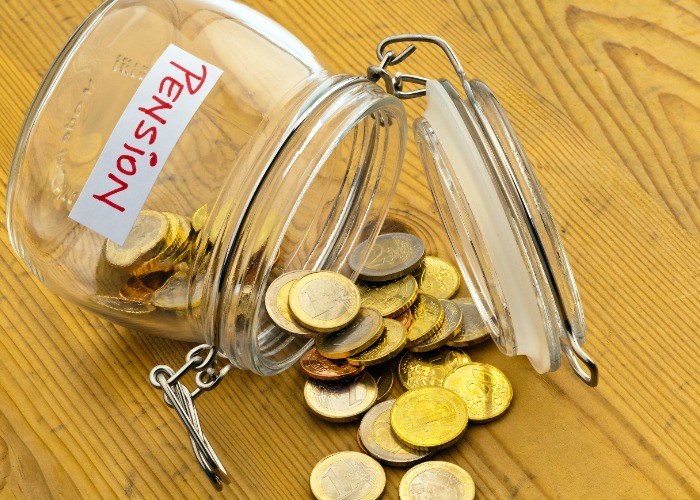Pension income: best way to spend your money during retirement

People may be so focused on building a decent pension they may overlook how to spend it. Here's what you need to consider.
When we think of retirement savings, there’s a good chance that the vast majority of our focus is on building a nest egg.
Once we’ve saved and invested enough to keep us going in our golden years, it feels like the job is done.
Yet the job is only half done as it is vital to consider how and when we take this money out again.
If you're interested in learning more about pensions, check out this guide.
What are your assets?
At the point of retirement, you hopefully should have several pots of money.
For example, you’ll have your pension and potentially a Stocks and Shares ISA, Cash ISA and perhaps a savings account.
There may be other assets such as property, or even antiques and jewellery you can draw on if you have no other alternatives.
You may also have other sources of income, including part-time work or rental income.
In an ideal world, you would know exactly what you need to live on at every stage in your retirement, and exactly how long you’re going to live.
That way you could perfectly time the spending of your assets over that period in the most tax-efficient way possible.
Unfortunately, neither of these things is easy to work out.
Cover the essentials first
So, the best we can do is establish a secure and guaranteed income to cover the essentials, regardless of how long we live.
You may be able to cover essentials such as bills and groceries with your State Pension, a Defined Contribution pension or (if you’re lucky) a Defined Benefit pension.
Alternatively, you might choose to convert some or all of your defined contribution pension pot into a guaranteed income by buying an annuity.
Once your basics are covered, you can use the rest of your funds to add flexibly to your income in retirement.
There are no hard and fast rules about the best possible order to spend your money, but there are some aspects to consider.
Spend any residual income
Some sources of income are more likely to be available to you early in retirement.
So, in the early years, you may still want to take on paid work, in which case this should be your first port of call for additional income – while your other assets remain invested.
You may also have flexible income from taking on a lodger or renting out a second property.
Learn more about the Rent a Room scheme on the Government site
The latter option tends to be less appropriate as you get older as you may not be keen to face the hassle of running a rental property, and you may not have the assets to cope if something goes awry.
If, for example, you need a new roof on your rental property, you might be able to handle the cost while you’re working but may struggle on a lower fixed income.
You may wish to use this income in early retirement, and then sell up and use the lump sum later.
Once you’ve stopped work and the basic essentials are covered by your guaranteed income, you’re likely to need to add to it at various points over the years.
You may still have assets in your pension, alongside separate savings and investments in ISAs, so you face the question of which assets to draw on first.
Which assets should I draw on first?
The first issue is the assets themselves.
If you want to draw from the stock market investments on a regular basis, one sensible approach is to transfer into income-producing assets, which should deliver dividends and income payments.
Typically, you can expect roughly 4% annual returns, based on estimates by Hargreaves Lansdown.
The returns may vary but shouldn’t be an issue if your essentials are already covered by guaranteed income elsewhere.
If you want to draw larger lump sums, when you get to the stage of withdrawing them, they should already be in cash.
You can still hold cash in pensions and Stocks and Shares ISAs, as well as Cash ISAs and savings accounts.
But you may need to anticipate where you’re planning to draw money from, to give yourself time to start transferring assets into cash.
Income Tax considerations
There are also be income tax considerations.
You can withdraw money from ISAs free of tax and take up to 25% of your pension pot as tax-free cash.
Any money you draw down from your pension may be subject to income tax at your highest marginal rate.
This means you need to balance how and when you draw money from each of these sources to avoid paying unnecessary tax.
In many cases, the aim will be to draw an income in a way that keeps you below the higher rate tax threshold.
Ideally, your stock market investments that are outside pensions will be in ISAs, so you don’t risk paying tax when you withdraw from them.
If you have separate investments, each year you can take advantage of your ISA allowance to move more of them into Stocks and Shares ISAs using the Bed & ISA process.
Bed & ISA involves selling investments you hold outside of an ISA and using the money to open a new one, or top up an existing ISA.
This should ensure you won’t have to take assets outside your pension that push you over the Capital Gains Tax (CGT) threshold in any one year.
If you need to free up large sums from stock market investments outside an ISA, CGT may need to be paid.
Read: guide to cutting your CGT bill
Watch out for Inheritance Tax
You also need to keep an eye on Inheritance Tax (IHT).
Any assets you hold inside your pension can be passed on free of tax if you die under the age of 75. But these assets may be taxed as income at the beneficiary’s highest marginal rate if you die on or after the age of 75.
The tax advantages of spending your pension cash or ISAs will depend on the size of your estate, who you are passing it to, and the tax position of the person who would receive your pension assets.
It’s not a straightforward calculation, but it’s one worth doing if you want to minimise your IHT bill.
Check out our guide for more tips on how to cut your IHT bill.
Other assets tend to come into their own towards the latter stages of your retirement, which is when most people consider the role of the family home through either downsizing or equity release.
If you plan to use equity release, it should be left as late as possible as it leaves less time for interest to roll up, resulting in lower overall costs.
The pros and cons of downsizing
Assuming you don’t want to move early in retirement for lifestyle reasons, downsizing can also make sense as the final part of your retirement income planning.
This has the advantage of enabling you to enjoy your home for as long as possible – and keep a major asset in case you need to pay for expensive care later.
If you don’t end up using it, and you plan to leave your property to children or grandchildren, you also have the residence nil rate band to take advantage of and reduce any potential IHT liability.
The downside of this approach is there’s no guarantee that you’ll be able to sell your property for the price you want at the time you want.
If you give yourself the freedom to sell whenever the market looks positive, you may be able to maximise the lump sum you can free up.
Read: renting vs downsizing in retirement
Whenever you sell, you need to be aware that there will be emotional and practical consequences, as well as financial ones.
Not everyone finds it easy to pare down their belongings, give up space for visiting family, move area, or part with a family home and all its memories.
Selling the family jewels, is also an uncertain business.
It’s often difficult to know whether antiques, paintings or jewellery will hold their value, let alone gain any additional value.
You could find yourself the victim of changing fashions that mean family heirlooms hold far more sentimental value than monetary value.
By having essential costs covered by a guaranteed income, you should never be faced with the horror of having to sell a treasured possession and can continue to pass it down through the generations.
*This article contains affiliate links, which means we may receive a commission on any sales of products or services we write about. This article was written completely independently.
Comments
Do you want to comment on this article? You need to be signed in for this feature
